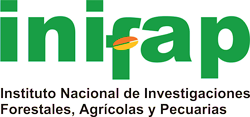Study of genetic diversity in Indigofera suffruticosa crops in El Salvador
DOI:
https://doi.org/10.29312/remexca.v15i8.3557Keywords:
Indigofera suffruticosa, haplotypic diversity, ITS2 ribonuclear regionAbstract
Añil is a woody shrub that belongs to the Fabaceae family. It is recognized as native and contributes to the sustainable agriculture of many rural regions of El Salvador due to its ability to fix nitrogen to the soil and is preferred because it produces quality indigotine, which is exported to different parts of the world. Currently, its genetic status is unknown; this research aimed to analyze the genetic variability of añil in crops in El Salvador. The samples were collected in five locations with cultivars of the species in 2021. DNA extraction was performed using the CETAB protocol with modifications, followed by PCR amplification of the ITS2 ribonuclear region. The PCR products were sent to Macrogen (Korea) for sequencing. The sequences were edited and analyzed using bioinformatics programs. The analyses revealed two haplotypes distributed in the Salvadorean territory and low genetic diversity indices (Hd= 0.46, π= 0.004). In addition, very high genetic differentiation has been found, mainly between the CPB locality and the rest of the localities (Fst≥ 0.5). The results are conclusive regarding a low genetic diversity, the presence of very few haplotypes, and a gene structure based on differences mostly between populations.
Downloads
References
Ahuja, M. R.; Jain, S. M. 2015. Diversity and erosion in plants. Indicators and prevention. 1st Ed. Botany Department, M. L. Sukhadia University, Udaipur, Rajasthan, India: Kishan Gopal Ramawat. 7(1): 2-3.
Borges, D. B.; Amorim, M. B.; Waldschmidt, A. M.; Mariano-Neto, E.; Vivas, C. V. and Pereira, D. G. 2012. Optimization of DNA extraction from fresh leaf tissues of Melanoxylon brauna (Fabaceae). Genet. Mol. Res. 11(2):1586-91. Doi: 10.4238/2012.May.22.8. PMID: 22653632.
Erquicia-Cruz, J. H. 2019. Añil, demografía y poder en San Vicente y San Miguel de la provincia de San Salvador del Reino de Guatemala (1750-1810) [http://purl.org/dc/dcmitype/Text]. Universidad Pablo de Olavide. 3-6 pp. https://dialnet.unirioja.es/servlet/tesis?codigo=264024.
Fazekas, A. J.; Kuzmina, M. L.; Newmaster, S. G. and Hollingsworth, P. M. 2012. DNA Barcoding methods for land plants. In: Kress, W. J. y Erickson, D. L. Ed. DNA Barcodes. Totowa, NJ: Humana Press. 858:223-252.
Hariri, M. R.; Bati-Chikmawati, T. and Hartana, A. 2017. Genetic diversity of Indigofera tinctoria l. in java and Madura islands as natural batik dye based on inter simple sequence repeat markers. Journal of mathematical and fundamental sciences. 49(2):105-115. Doi: https://doi.org/10.5614/j.math.fund.sci.2017.49.2.1.
Leigh, J. W. and Bryant, D. 2015. PopART: full-feature software for haplotype network construction. Methods Ecol Evol. 6(9):1110-1116.
Ruíz, V. C. R.; Solano, J. P. L.; Castellanos, J. S. y Olán, M. O. 2018. Variabilidad genética en algunas especies cultivadas y silvestres de amaranto. Revista Mexicana de Ciencias Agrícolas. 9(2):405-416.
Stevens, W. D.; Montiel, O. M.; Pool, A.; Gómez, L. D.; Arbaláez, A. L. y Hollowell, V. C. 2009. Flora de Nicaragua. ANGIOSPERMAS (Fabaceae-Oxalidaceae). Missouri Botanical Garden Press. 85(2): 1016. https://archive.org/details/mobot31753002849922/mode/1up?view=theater.
Vera, D. F. 2017. Biodiversidad intraespecífica varietal para mejorar ambientes degradados por monocultivos en musáceas, como medida de control de plagas y enfermedades. Tesis Doctoral. Universidad Autónoma de Barcelona, España. 12-14 pp. http://hdl.handle.net/10803/457711.

Published
How to Cite
Issue
Section
License
Copyright (c) 2025 Revista Mexicana de Ciencias Agrícolas

This work is licensed under a Creative Commons Attribution-NonCommercial 4.0 International License.
The authors who publish in Revista Mexicana de Ciencias Agrícolas accept the following conditions:
In accordance with copyright laws, Revista Mexicana de Ciencias Agrícolas recognizes and respects the authors’ moral right and ownership of property rights which will be transferred to the journal for dissemination in open access. Invariably, all the authors have to sign a letter of transfer of property rights and of originality of the article to Instituto Nacional de Investigaciones Forestales, Agrícolas y Pecuarias (INIFAP) [National Institute of Forestry, Agricultural and Livestock Research]. The author(s) must pay a fee for the reception of articles before proceeding to editorial review.
All the texts published by Revista Mexicana de Ciencias Agrícolas —with no exception— are distributed under a Creative Commons License Attribution-NonCommercial 4.0 International (CC BY-NC 4.0), which allows third parties to use the publication as long as the work’s authorship and its first publication in this journal are mentioned.
The author(s) can enter into independent and additional contractual agreements for the nonexclusive distribution of the version of the article published in Revista Mexicana de Ciencias Agrícolas (for example include it into an institutional repository or publish it in a book) as long as it is clearly and explicitly indicated that the work was published for the first time in Revista Mexicana de Ciencias Agrícolas.
For all the above, the authors shall send the Letter-transfer of Property Rights for the first publication duly filled in and signed by the author(s). This form must be sent as a PDF file to: revista_atm@yahoo.com.mx; cienciasagricola@inifap.gob.mx; remexca2017@gmail.
This work is licensed under a Creative Commons Attribution-Noncommercial 4.0 International license.


